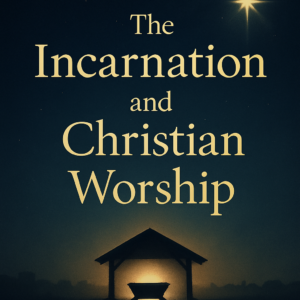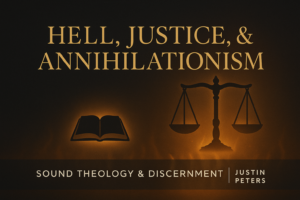⏱️ Estimated Reading Time: 4 min read
Sight is a clear literary theme in the Road to Emmaus story (Luke 24:13-35). Cleopas and his buddies saw Jesus but didn’t really see him. They saw a man coming down the road. They had an in-depth conversation with him as they walked together. However, they don’t perceive that the man is Jesus. They don’t see Jesus, even though they most likely knew him before Jesus’ death and resurrection. They had undoubtedly seen him teach and knew what he looked like. Their lack of perception that the man was Jesus is connected to their lack of spiritual perception. They physically didn’t recognize him, and spiritually didn’t recognize him. What is so terrifying about the Road to Emmaus account is that these men claimed to be followers of Christ! The Road to Emmaus story teaches us that even Christians might now fully perceive Jesus.
This reality is no truer than when we are studying and preaching the Old Testament. It is red meat for a pastor to preach Christ from an epistle like Galatians. It is easy to see Jesus in the Gospel narratives. However, Jesus is harder to see in books like Joel or Haggai. However, the command to “preach the Word” (2 Timothy 4:2) and Jesus’ example on the Road to Emmaus call us to preach Christ from the Old Testament.
Paul famously told his younger disciple to “preach the Word” (2 Timothy 4:2). Every pastor should heed this command. Every pastor has a call on their life to preach or proclaim the Word. Of course, that begs the question, “What is the Word?” John 1:1 calls Jesus the Word. All of Scripture can be understood as God’s communication or Word (2 Timothy 3:16). The Word can be understood as the good news or the gospel. However, all three aspects of the Word’s meaning are intertwined. Jesus cannot be rightly understood separate from the whole counsel of God or the gospel. The Bible as a whole must be understood according to the person and work of Christ, specifically the good news of salvation through faith in his atoning work on the cross. The gospel is only good news unless linked to the Old and New Testaments. As a result, Timothy (and contemporary pastors) are to preach the Bible, the gospel, and Jesus. Further, we are to intertwine them in our preaching.
Jesus models this approach on the Road to Emmaus. Luke 24:27 says, “And beginning with Moses and all the Prophets, he interpreted to them in all the Scriptures the things concerning himself.” Of course, this verse cannot mean a couple of obvious things. First, Jesus did not read the entire Old Testament and showed how each verse concerned him. He simply would not have had the time to do it. Second, not every verse in the Old Testament clearly was some sort of direct reference or foretelling prophecy about Jesus. However, Luke 24:27 does provide a broad interpretive grid by which Jesus understood each genre of the Old Testament. At some level, and maybe it was a broad macro level, every passage points to Jesus. Every passage from Genesis to Malachi says something concerning Jesus. At least, that is how Jesus saw it!
The fun twist to the Road to Emmaus story is that when Jesus showed them how to see Jesus in the Old Testament, the men were then able to see Jesus physically. In other words, interpreting Christ from the books of Moses and the Prophets is how we actually perceive Christ. Tomes are written on preaching like Jesus and interpreting Christ from the Old Testament. There are certainly appropriate ways to do it and inappropriate ways to do it. However, the general principle is that when pastors preach the Old Testament, they are to preach Jesus.
Micah is married to Kristen and they have two children. He grew up in Denton, Texas and graduated from the University of North Texas. He also holds degrees from Dallas Seminary, Southwestern Baptist Seminary, and Toronto Baptist Seminary. Micah’s doctorate is from Southern Baptist Seminary. He has pastored at churches in Austin and Houston. Micah is currently the pastor of Redeemer Church of Denton which he planted in 2013.




